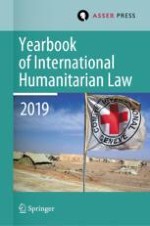
2021 | OriginalPaper | Buchkapitel
1. Evolution of the International Humanitarian Law Provisions on Sieges
verfasst von : Agnieszka Szpak
Erschienen in: Yearbook of International Humanitarian Law, Volume 22 (2019)
Verlag: T.M.C. Asser Press
Aktivieren Sie unsere intelligente Suche, um passende Fachinhalte oder Patente zu finden.
Wählen Sie Textabschnitte aus um mit Künstlicher Intelligenz passenden Patente zu finden. powered by
Markieren Sie Textabschnitte, um KI-gestützt weitere passende Inhalte zu finden. powered by